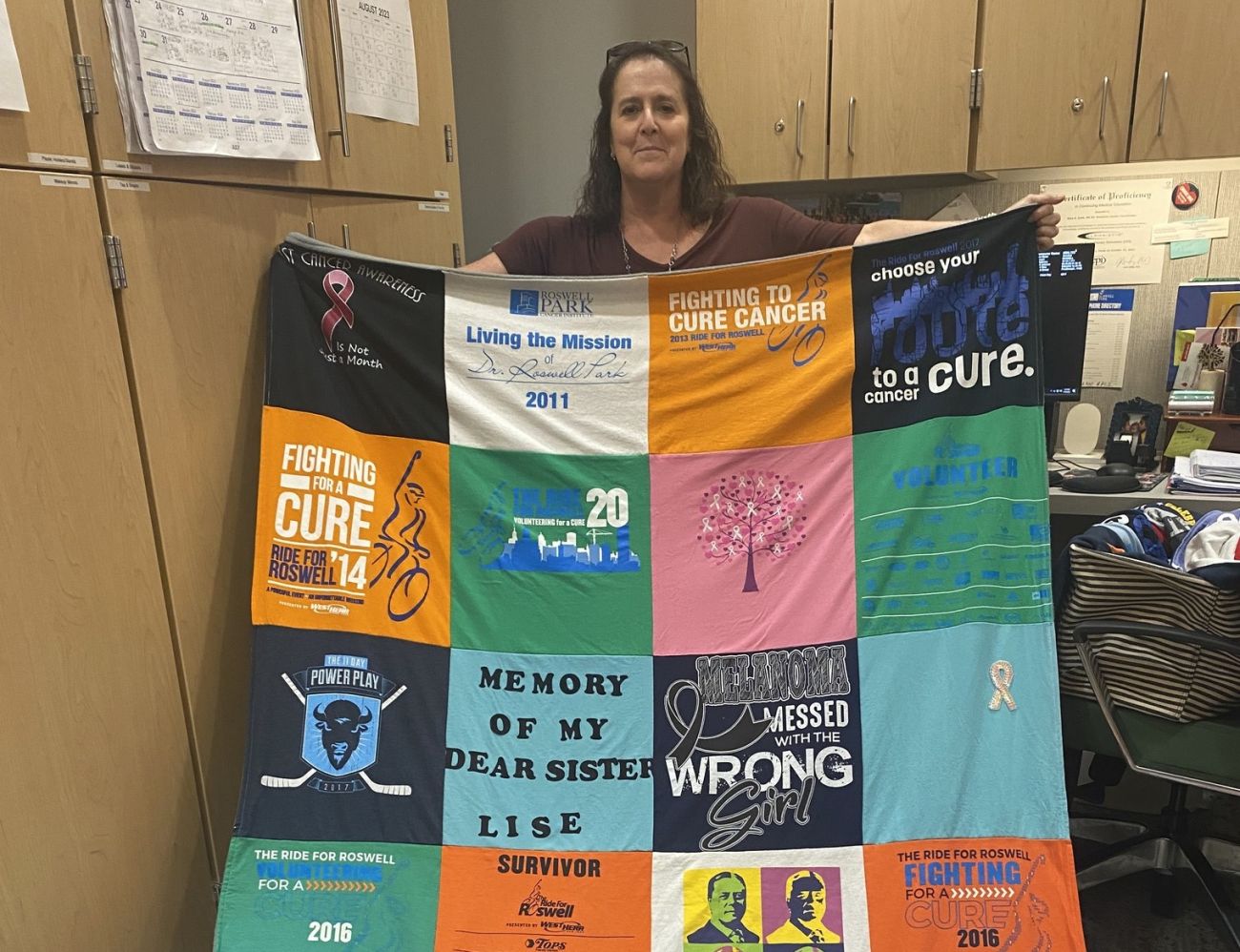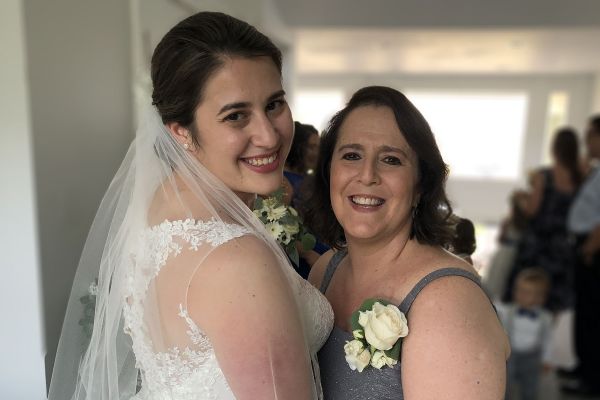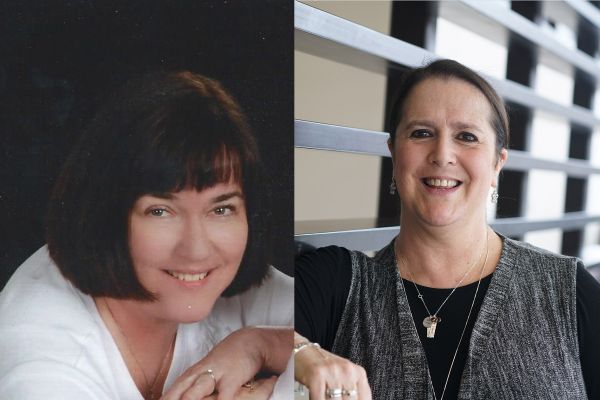Sara Sade will be the first to say she doesn’t wear T-shirts often, preferring instead looser, more flowing and comfy clothes. But somehow, she still amassed quite the collection of commemorative shirts from the time she was first diagnosed with breast cancer 18 years ago.
“Because it was breast cancer, everything was pink,” she says. “I don’t wear t-shirts very often unless they’re oversized because I am very short, so t-shirts are the least comfortable thing I can even imagine wearing. But I can’t throw away anything cancer-related, I feel like it’s bad mojo. Instead, I collected them in my closet.”
Now a four-time cancer survivor and working at Roswell Park Comprehensive Cancer Center as a coordinator in the 11 Day Power Play Cancer Resource Center, Sara found the shirts piling up, first in her bedroom and then in a guest room closet. Working at Roswell Park also means adding Ride for Roswell and Corporate Challenge shirts to the collection each year, in addition to shirts handed out on Employee Appreciation Day. Each year during the Ride for Roswell, even when she was a volunteer at the event, Sara picks up an orange shirt, the color symbolizing survivorship, in addition to a shirt indicating she’s a survivor not just of breast cancer (pink) but of metastatic melanoma (black).
A story in every shirt
She was gifted shirts by family, friends and well-wishers. Each October, more pink shirts would arrive. Each June, another shirt or two from the Ride for Roswell. A friend gave her a shirt in honor of Sara’s sister, Lise, after Lise was diagnosed with ovarian cancer.
The collection of t-shirts, just sitting around the house, seemed kind of silly. But when Sara learned about a company called Project Repat, she found a solution.
“Project Repat is a company that makes t-shirt quilts. I kept saying to my husband, David, that I really wanted, somehow, to either become a seamstress, which would never happen, or I needed to hire someone locally to help make a t-shirt quilt,” she says.
Sara still had to do some lifting before sending her shirts off to be made into a quilt. “You have to create panels and there’s so many panels they need based on whether you’re doing a lap blanket or a queen or king-sized blanket. I got my t-shirts together, bought a brand-new pair of scissors and just started cutting,” she says. Any leftover materials were set aside.
Sara’s first quilt was made four years ago; recently, thanks to the ever-growing collection, she had a second quilt made. Both feature 24 colorful patches, some with embroidery, and are large enough to cover a bed.
“I always think about what the fairness is, because it’s a very personal project, and I’d like both of my daughters to have a quilt from me. I’ve made them blankets before with their own t-shirts, but I really wanted this to be a legacy ‑ that’s kind of all I could think about,” she says.
The importance of goals in survivorship
The quilts, and the shirts they came from, also are a reminder of how far she’s come and how fortunate Sara has been since her first diagnosis in 2006. Each shirt is another event, another year, another victory.
While some people might have a bucket list of things they’d like to do with their lives, Sara instead prefers to keep a list of the things she has left to do. Currently on the list: Collect enough shirts to create a third quilt.
Never miss another Cancer Talk blog!
Sign up to receive our weekly Cancer Talk e-newsletter.
Sign up!“I think that has been my mantra since I was diagnosed with stage 4 metastatic melanoma in 2011. That was when I created the list,” she says, adding that she had a recurrence in 2014. “I needed to have a reason to live. It was just non-negotiable. I still have the list and I still add things. I always have 10 things on the list, never less than 10 things, because I think that’s important. It’s not just live to see retirement or live to see a grandchild. I want to live to do my next trip out to Western Canada. I want to do things. I want to live to do them.”
Sara is grateful for every day she has and has lots to look forward to, including spending time with her two-year-old grandson and her daughter’s wedding in Connecticut. She gets to share her story with patients at Roswell Park as they come through the Resource Center, spreading a little optimism and support along the way.
“Roswell miracles occur and that’s what I consider myself to be,” she says.


